Job Quality Tools Library > Section 4: Strengthening Practices to Improve Job Quality > Tools: Worker Voice
Originally posted: May 11, 2020
Last updated: September 20, 2023
Section 4, the core of the library, includes tools designed to address specific components of job quality. Once organizations have determined their job quality priorities, they can turn to these tools to shift practices in the areas they have deemed most urgent, either in their own organizations or in the businesses with which they partner.
We’ve organized tools into categories that reflect the job quality attributes most commonly cited across the job quality frameworks and definitions included in Section 1. These attributes include wages, benefits, scheduling, legal rights, equity and inclusion, opportunity to build skills and advance, supportive work environment, worker voice, and employee ownership. Each attribute also includes sub-categories for ease of navigation.
↓ Tools and Resources Below the Box ↓
Library Navigation
- Job Quality Tools Library Homepage
- About This Library
- Section 1: Understanding Job Quality
- Section 2: Assessing Job Quality
- Section 3: Engaging Businesses on Job Quality
- Section 4: Strengthening Practices to Improve Job Quality
- Section 5: Monitoring Improvements in Job Quality
- Special: COVID-19 Response Tools and Resources
- Index of Tools by Field
Employee Engagement

Who’s It For: Employers, Workforce Development, Worker Advocacy
What’s It For: This guide to conducting worker focus groups posits amplifying worker voice as an equitable solution for reducing turnover. It was developed as part of the Economic Opportunities Program’s Reimagine Retail job quality research, in response to growing recognition of the importance of listening to workers. The focus group guide delves into six topics related to highlighting worker voice, which include building the business case to employers, developing interview guides, what to do with your interview data, and pandemic considerations. This tool may be helpful for employers looking to use worker expertise and engagement to strengthen job quality, equity, and the business bottom line. Workforce development and worker advocacy organizations may also find it helpful to share these tools with employers in their networks.

Who’s It For: Employers, Workforce Development, Worker Advocacy
What’s It For: This guide to conduct worker surveys posits amplifying worker voice as a viable business strategy. It was developed as part of the Economic Opportunities Program’s Reimagine Retail job quality research, in response to growing recognition of the importance of listening to workers. The tool for conducting worker surveys includes practical tips, sample opening survey language, and sample survey questions that address topics such as job satisfaction, growth opportunities, and workplace relationships and culture. This tool may be helpful for employers looking to use worker expertise and engagement to strengthen job quality, equity, and the business bottom line. Workforce development and worker advocacy organizations may also find it helpful to share these tools with employers in their networks.
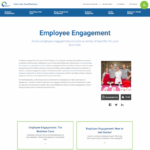
Pacific Community Ventures – Employee Engagement
Who’s It For: Employers, Economic Development, Investing and Lending, Worker Advocacy, Workforce Development
What’s It For: This chapter in Good Jobs, Good Business – a toolkit for small business owners seeking to improve job quality – promotes strategies to strengthen employee engagement and create a strong workplace culture. Tactics include creating a culture of respect and trust, emphasizing company values, and allowing employees to participate in decision-making. This resource is designed for small business owners but can also been used by partners (including lenders and workforce development organizations) to coach businesses on job quality improvements with potential business benefits.
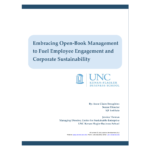
Who’s It For: Employers, Economic Development, Investing and Lending
What’s It For: This white paper provides a primer on open-book management, an approach to sharing financial information with workers to strengthen decision-making. Topics covered include the basics of open-book management, benefits and challenges associated with this strategy, and actionable steps that companies can take to apply open-book management in their business. This resource may be particularly helpful for employers and business support organizations interested in strengthening employee engagement and involving workers in a broader range of decisions.
Worker Organizing
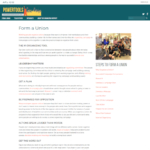
Organizing Institute, AFL-CIO – Form a Union
Who’s It For: Worker Advocacy
What’s It For: This is a step-by-step guide to workplace organizing. It is designed to help frontline workers and their advocates form a union, one longstanding approach to improving job quality that offers a channel to voice feedback to employers.
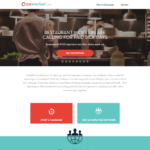
Who’s It For: Worker Advocacy
What’s It For: This online platform provides a tool for workers and their advocates to develop petitions and create campaigns to request tangible improvements in their workplaces, from wage increases to dress code modifications. Campaigns can attract media attention, and many past campaigns have resulted in employers announcing policy changes to improve job quality. This tool can be particularly valuable for workers that lack channels to provide feedback within their workplaces as well as worker advocates.
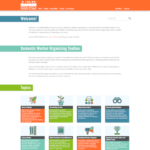
National Domestic Workers Alliance – Domestic Worker Organizing Toolbox
Who’s It For: Worker Advocacy
What’s It For: In-home workers such as child and elder-care providers play an important role in the US economy, but they are excluded from many labor protections and vulnerable to exploitation. This toolbox is intended to assist domestic workers and the worker advocacy organizations that support them in organizing, strengthening their leadership skills, and implementing strategic campaigns to drive policy and practice change that improves job quality.
Worker Ownership
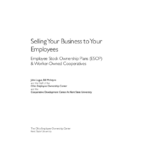
Who’s It For: Employers, Economic Development, Investing and Lending, Worker Advocacy, Workforce Development
What’s It For: If a business owner is retiring or leaving the organization, transitioning to employee ownership is one avenue to sustain the business and workers’ jobs while strengthening job quality. This highly technical guide provides information for owners interested in selling their business to employees through an ESOP or co-op. Included are details about conducting a landscape analysis, legal rights, tax policy, and valuation of your business.
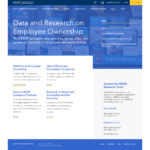
National Center for Employee Ownership – Research on Employee Ownership
Who’s It For: Employers, Economic Development, Investing and Lending, Policy, Worker Advocacy
What’s It For: This resource includes research summaries related to potential effects of employee ownership on firms and workers. Research includes studies conducted by NCEO as well as academic research from a variety of sources. Areas explored include firm performance, employment stability and survival, and employee financial well-being. This resource may be particularly useful for employers exploring employee ownership business models as well as advocates and employee support organizations working with either business owners or workers interested in employee ownership.
Supplemental Resources – Worker Ownership
- The Aspen Institute Business Ownership Initiative – Narrowing the Racial Wealth Gap through Business Ownership. This guide highlights existing research on the link between the racial wealth divide and business ownership. Because lower levels of business and financial assets held by Black and Latino households is a key factor perpetuating the racial wealth divide, business ownership may be an important means to narrow the gap. This guide may be useful for economic development organizations, investors, lenders, and other practitioners seeking to understand and respond to the racial wealth divide.
- Harvard Business Review – Every Employee an Owner. Really. This article includes information and approaches for developing ownership cultures that align employee and company interests. Practices discussed can be applied across a range of different ownership structures and draw from the authors’ personal experiences as well as case studies to highlight practical considerations for implementing employee ownership structures. Businesses and business support organizations who are implementing or exploring employee ownership structures may find this resource particularly useful.
- IZA World of Labor – Does employee ownership improve performance? In this article, author Douglas Kruse presents a synthesis of research findings on employee ownership. Topics include findings related to a variety of areas, including company performance, economic stability, and inequality. The article summarizes ‘pros’ and ‘cons’ of employee ownership models as well as suggestions for policymakers. This article has application for business leaders exploring different job quality approaches and models as well as a range of practitioners positioned to promote the use of employee ownership models.
- Joseph Blasi, Douglas L. Kruse, and Maureen Conway – Sharing profits and ownership with workers not only make them happier, it benefits the bottom line too. In this article, the authors present findings from their research demonstrating the benefits of profit-sharing and worker ownership models for both employees and businesses. They describe different models of profit-sharing and also cite past studies documenting a range of benefits for employees participating in these businesses, including higher wages and better benefits compared to peers. This article has application for business leaders exploring different job quality strategies as well as policy and economic development leaders positioned to expand the use of profit-sharing models.
- Democracy at Work Institute – A brief, visual guide to understanding employee ownership structures. This visual guide illustrates how different forms of ownership are structured. The resource focuses on two primary approaches to employer ownership: worker cooperatives and employee stock ownership plans. Using diagrams, the resource compares employee ownership structures to conventional, privately held companies. The guide also includes a visual depiction of potential benefits of business ownership for worker owners related to factors including profitability and decision-making. Topics mentioned include profits, governance, management, and types of control. Employers, policymakers and stakeholders working with businesses or workers interested in employee ownership may find this brief, visual guide useful in understanding employee ownership structures and their potential benefits.
- Democracy at Work Institute – Sustainable Economic Democracy: Worker Cooperatives for the 21st Century. This guide explores worker cooperative networks as a neighborhood, municipal and regional strategy for generating wealth. Drawing from two cases, the authors put forth a framework for building a scalable cooperative network in post-industrial American cities. This guide may be useful to practitioners learning about cooperative business models or exploring strategies to spread worker ownership.
- Democracy at Work Institute – Worker Cooperative Development Models. This newsletter contains a collection of articles about different worker cooperative development models, sharing the strengths and challenges of different models. These articles could be helpful to those engaged in worker ownership efforts who desire a deeper understanding of the variety of models being implemented in different localities. This resource also offers an introduction for those who are new to the field and its terminology.
Supplemental Resources – Worker Voice
- Chicago Beyond (Equity Series) – 2019 Guidebook: Why Am I Always Being Researched? This guidebook offers an equity-based approach to research to strengthen the quality and authenticity of information used to drive decision-making. The guide addresses existing power dynamics and unintended biases in the creation of research and focuses on community members as authors and owners of information. In addition to describing seven inequities and opportunities for change in the research process, this resource provides guidance for community organizations, researchers, and funders. This resource may be particularly useful to individuals and organizations interested in centering input from community organizations, community members, and/or workers to inform job quality strategies.
- Fe y Justicia Worker Center – All Workers Have Rights. This webpage and virtual handbook is designed to educate workers about their rights on the job. Topics include wage theft, discrimination, sexual harassment, labor/human trafficking, and occupational safety with a spotlight on issues facing undocumented workers. Although some information is specific to Texas law, the information has relevance beyond Texas and could be adapted to different geographies. A range of organizations that work with workers, including workforce development and advocacy organizations, may find this resource useful to help educate workers about their rights. To view the virtual handbook, scroll down toward the bottom of the page to the header “All Workers Have Rights.”